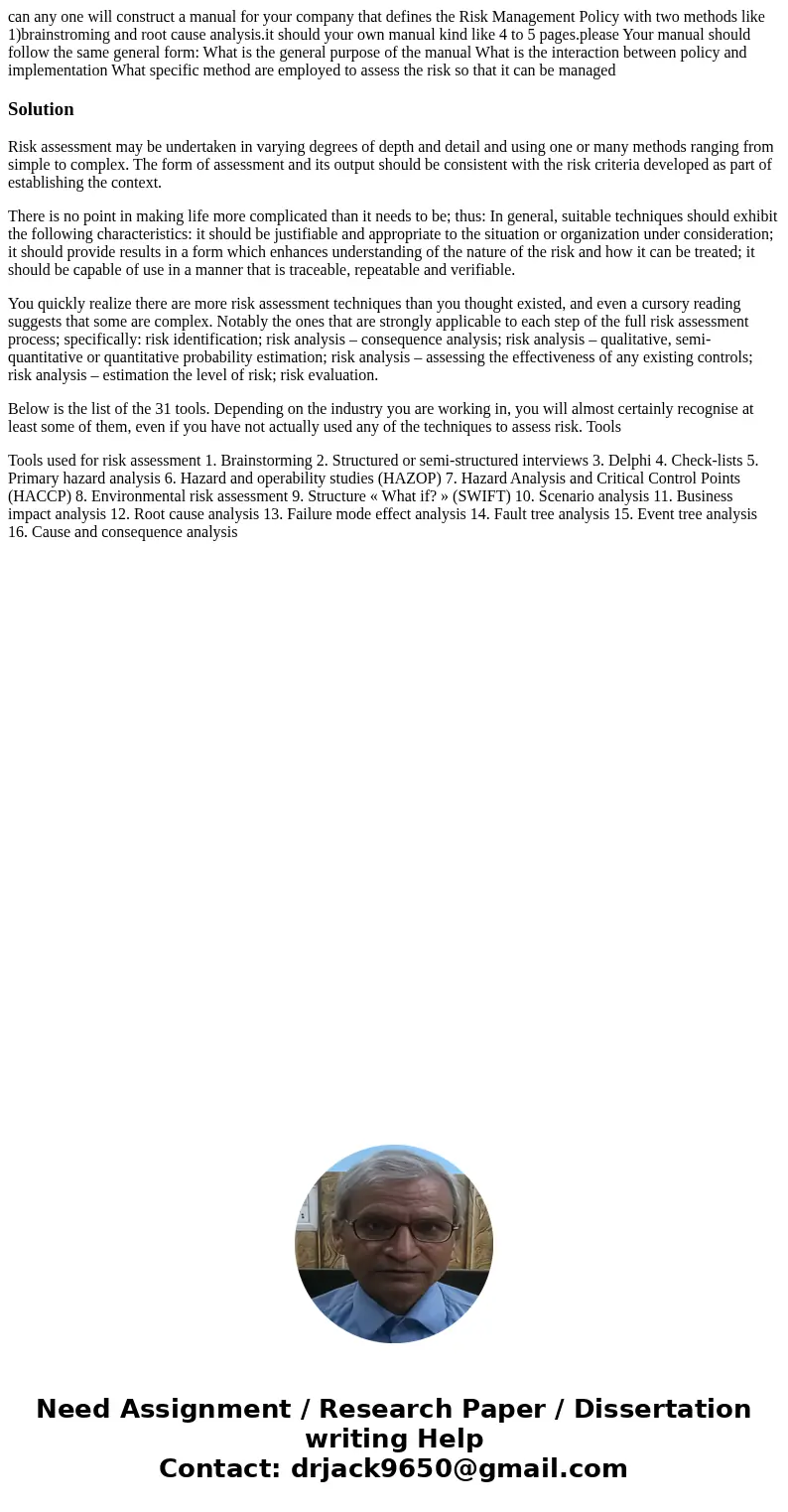can any one will construct a manual for your company that de
can any one will construct a manual for your company that defines the Risk Management Policy with two methods like 1)brainstroming and root cause analysis.it should your own manual kind like 4 to 5 pages.please Your manual should follow the same general form: What is the general purpose of the manual What is the interaction between policy and implementation What specific method are employed to assess the risk so that it can be managed
Solution
Risk assessment may be undertaken in varying degrees of depth and detail and using one or many methods ranging from simple to complex. The form of assessment and its output should be consistent with the risk criteria developed as part of establishing the context.
There is no point in making life more complicated than it needs to be; thus: In general, suitable techniques should exhibit the following characteristics: it should be justifiable and appropriate to the situation or organization under consideration; it should provide results in a form which enhances understanding of the nature of the risk and how it can be treated; it should be capable of use in a manner that is traceable, repeatable and verifiable.
You quickly realize there are more risk assessment techniques than you thought existed, and even a cursory reading suggests that some are complex. Notably the ones that are strongly applicable to each step of the full risk assessment process; specifically: risk identification; risk analysis – consequence analysis; risk analysis – qualitative, semi-quantitative or quantitative probability estimation; risk analysis – assessing the effectiveness of any existing controls; risk analysis – estimation the level of risk; risk evaluation.
Below is the list of the 31 tools. Depending on the industry you are working in, you will almost certainly recognise at least some of them, even if you have not actually used any of the techniques to assess risk. Tools
Tools used for risk assessment 1. Brainstorming 2. Structured or semi-structured interviews 3. Delphi 4. Check-lists 5. Primary hazard analysis 6. Hazard and operability studies (HAZOP) 7. Hazard Analysis and Critical Control Points (HACCP) 8. Environmental risk assessment 9. Structure « What if? » (SWIFT) 10. Scenario analysis 11. Business impact analysis 12. Root cause analysis 13. Failure mode effect analysis 14. Fault tree analysis 15. Event tree analysis 16. Cause and consequence analysis

 Homework Sourse
Homework Sourse